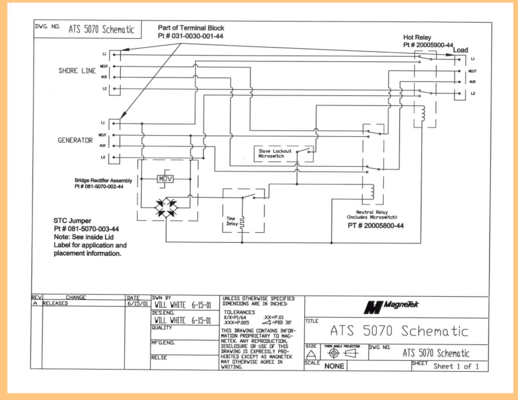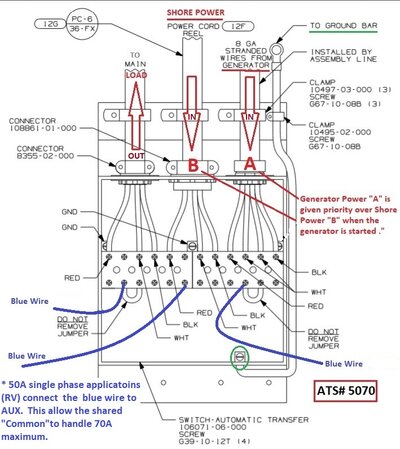Here is a good article on grounding requirements for generators.
By
Michael Johnston
Generators are commonly installed for buildings or structures requiring emergency systems, legally required standby systems or optional standby power systems. Some generators are located within the building or structure they supply; but, frequently, they are located outside. Unless these are small generators supplying branch circuits, the conductors supplied are feeders, and if they are located outside buildings or structures, the requirements in NEC Article 225 apply, specifically 225.31 through 225.39. Section 250.32 also applies to the feeder conductors supplying the building or structure.
Permanently installed generators are separate power sources and are often installed as separately derived systems, which are defined in Article 100. The decision to connect a generator as a separately derived system is determined by the type of transfer equipment specified for the design. There is an important informational note following Section 250.30 that describes the relationship between the transfer switch and how the grounding connections should be made for the generator. First, if a transfer switch for a generator switches the grounded (usually a neutral) conductor, then the generator must be grounded as a separately derived system in accordance with all applicable requirements in 250.30(A). The reason is that, in the normal power mode, the grounded (neutral) conductor for the load is connected to the grounding electrode conductor at the service. In standby mode, the grounded (neutral) conductor for the load is switched over to the generator source, which is grounded as a separately derived system. The result is that, in either position of the transfer switch, the electrical system is grounded. If there is no switching action in the grounded (neutral) conductor through the transfer equipment, then the generator system remains grounded with the transfer switch in either position: normal or standby by the grounding electrode conductor at the service. If the generator is a separately derived system and is located outdoors, a grounding electrode connection is required at the source location to comply with 250.30(C). The equipment grounding and bonding connections, in this case, have to meet the requirements in 250.35(B) for permanently installed generators.
Section 250.35 covers important requirements for providing an effective ground-fault current path, which 250.4 addresses generally. Generators grounded as separately derived systems meet this requirement when installed according to the rules in 250.30(A). If the generator is not installed as a separately derived system, an effective ground-fault current path must be provided in accordance with 250.35(B). This simply means a supply-side bonding jumper has to be installed between the generator and the equipment grounding terminal bar or bus of the enclosure supplied by the system. The supply-side bonding jumper must be installed in accordance with 250.102(C). The minimum size must be based on Table 250.66 or the 12.5 percent rule based on the total circular mil area of the largest ungrounded phase conductors connected to the generator. If the generator has an overcurrent device, the supply feeders from the output side of the overcurrent protective device on the breaker must include an equipment grounding conductor sized in accordance with 250.122, based on the rating of the overcurrent device at the generator.
Auxiliary grounding electrodes
If generators are installed outdoors, the design often specifies an auxiliary grounding electrode. The NEC does not require auxiliary electrodes; however, if installed, 250.54 provides specific requirements that must be met. The auxiliary electrode provides a direct connection to the earth at the generator location. This grounding connection is in addition to the grounding and bonding required by either 250.30(A) or 250.35(B), as covered above. The auxiliary grounding electrode must be connected to the equipment grounding conductor in addition to the frame of the generator. The earth is not permitted as an effective ground-fault current path. When auxiliary grounding electrodes are installed for equipment, they are not required to meet the 25-ohm requirements specified in 250.53(A)(2) Exception.
Summary
Section 250.30 Informational Note No. 1 provides essential information that assists users in determining system grounding requirements for generators. The transfer equipment applied in the design is a key factor for determining if a generator must be grounded as a separately derived system. An effective ground-fault current path is required between the generator and the equipment supplied by the system. The effective ground-fault current path is required to be either a supply-side bonding jumper in accordance with 250.102(C) or a load-side
equipment bonding jumper in accordance with 250.102(D). Installing an auxiliary grounding electrode for a generator is not an NEC requirement; however, if installed, the installation must meet the requirements of 250.54.


